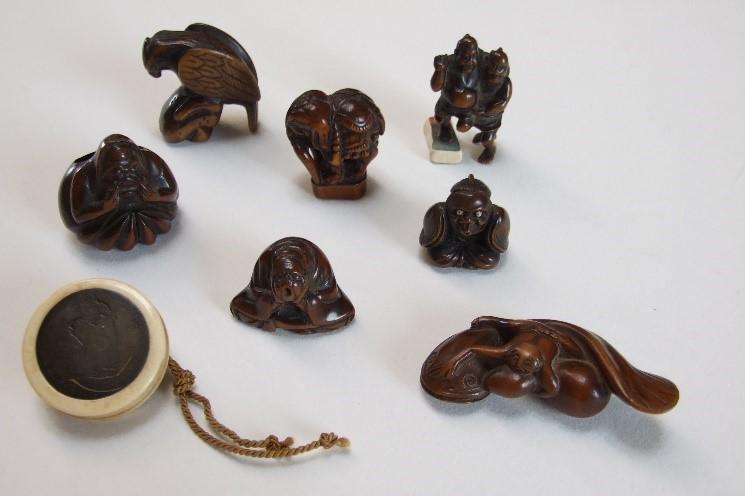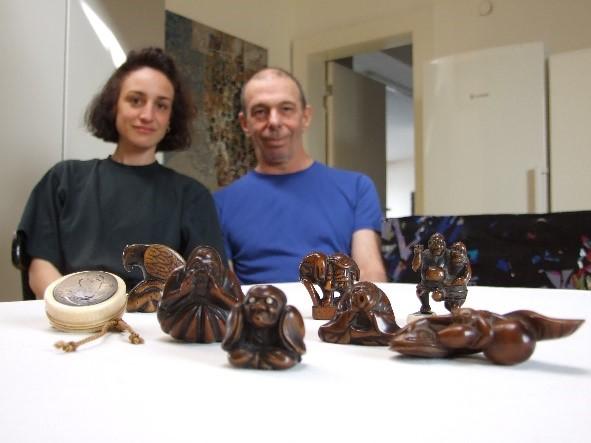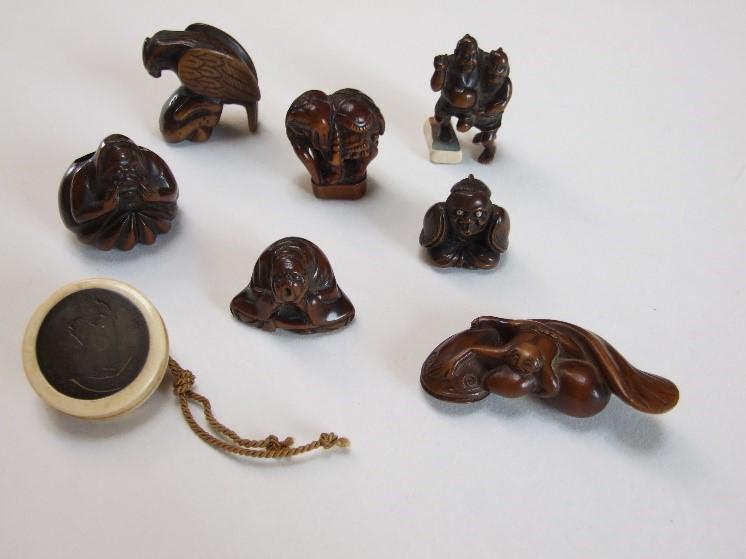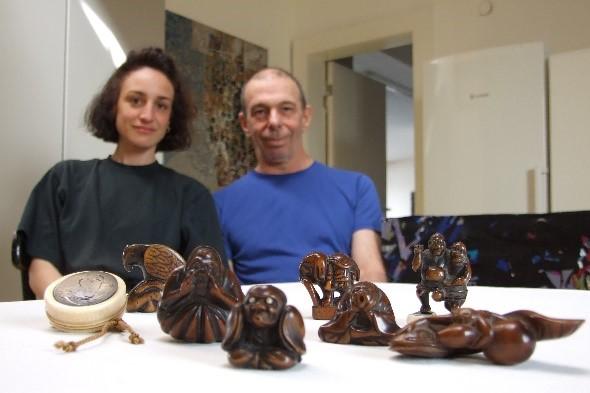Eight small Japanese wooden figures (netsuke) have been restituted to the descendants of East Asian artefact collector Herbert Ginsberg (1881-1962). They were confiscated by Nazi officials in the Netherlands in 1942. Up until the 1980s they were held in a private collection in Wolfenbüttel, and from there they were transferred to another collection in northern Germany. The items were offered for sale at the beginning of 2022 at the auction house Nagel and were subsequently returned by Nagel to the rightful heirs represented by Dodi Reifenberg.
Herbert Ginsberg came from a Jewish family that became prosperous through the textile industry in Poland and by founding the private bank Gebrüder Ginsberg (1866-1938). He amassed his collection of East Asian art at the beginning of the 20th century. Accompanied by his older brother, Ginsberg travelled to East Asia for several months in 1908, which was where he acquired most of the items. He continued to expand the collection into the 1930s by making purchases throughout Europe.
Ginsberg was actively involved with the relevant experts: he became a founding member of the East Asian Art Society (Gesellschaft für Ostasiatische Kunst) in Berlin in 1926 and was its treasurer until his expulsion in April 1938.
When the National Socialists seized power in 1933, the Ginsbergs’ lives were endangered. In July 1938, Herbert Ginsberg, his wife Olga, née Lachmann, and his daughter were forced to leave the villa on Lake Kleiner Wannsee in a hurry. They fled to relatives in Basel, from where the family attempted to obtain exit documents. Only their daughter managed to obtain a visa to New York, however.
Herbert and Olga Ginsberg fled with part of the collection to the Netherlands, where they hoped in vain to secure a visa that would enable them to travel overseas. In August 1942 the couple received a notice of deportation to the Amsterdam ghetto, which they escaped by going into hiding. Ginsberg placed the collection in the care of his friend and business partner Johann Christiaan van Dijk in Rotterdam. The couple survived the Shoah in hiding and under a false identity. However, the collection was confiscated by the SS Sicherheitsdienst during a search of Van Dijk’s business premises, from where it was transferred to the office of SS-Sturmscharführer Friedrich Wilhelm Ohlendorf in The Hague by Nazi official Karl August Schmidt. There are indications that the collection was subsequently taken to Germany, where most items ended up in private ownership.
Freelance provenance researcher Laura-Marijke Hecker has been investigating the lost collection of East Asian artefacts for three years in connection with the “Ginsberg Project”, which is funded by the German Lost Art Foundation.
See here for details: https://ginsberg-pro.hypotheses.org/
To the project Herbert Ginsbergs verschollene Ostasiatica Sammlung – eine Spurensuche zwischen 1942 und heute [Herbert Ginsberg’s lost collection of East Asian artefacts – in search of the trail from 1942 to today]





